Introduction
White glutinous rice, also known as sticky rice or sweet rice, is a staple ingredient in countless Asian cuisines, celebrated for its unique texture and versatility. Unlike long-grain rice varieties, glutinous rice becomes soft, chewy, and delightfully sticky when cooked, making it ideal for dishes like sushi, desserts, and traditional meals. While its preparation may seem straightforward, achieving flawless results requires attention to detail, from selecting the right grains to mastering cooking techniques. This article explores the science behind cooking white glutinous rice, shares expert tips, and provides creative recipes to elevate your culinary repertoire.

Chapter 1: Understanding White Glutinous Rice
1 What Makes Glutinous Rice Unique?
Glutinous rice (Oryza sativa var. glutinosa) is distinct from other rice varieties due to its high amylopectin content, a starch molecule responsible for its sticky texture. Despite its name, it contains no gluten, making it safe for gluten-free diets. This rice is available in short, medium, and long-grain forms, with short-grain varieties being the most common for achieving maximum stickiness.
2 Types of Glutinous Rice
- Thai Sticky Rice: Often labeled as “sweet rice,” this variety is traditionally steamed and paired with mango or coconut milk.
- Japanese Mochi Rice: Used to make mochi (rice cakes), this grain has a particularly high starch content.
- Chinese Glutinous Rice: Commonly used in zongzi (sticky rice dumplings) and savory congee.
3 Selecting and Storing Rice
- Quality Matters: Opt for fresh, unbroken grains. Old rice may require longer soaking or produce uneven textures.
- Storage: Keep in an airtight container in a cool, dry place to prevent moisture absorption and pests.
Chapter 2: Preparing Glutinous Rice for Cooking
1 Rinsing: The First Step to Perfection
Rinsing removes excess starch and debris, preventing gummy results.
- Method: Place rice in a fine-mesh strainer and rinse under cold water until the water runs clear (3–4 times).
- Avoid Over-Rinsing: Excessive rinsing may wash away nutrients and flavor.
2 Soaking: To Soak or Not to Soak?
Soaking reduces cooking time and ensures even hydration.
- Recommended Soaking Time: 4–6 hours (or overnight) for short-grain varieties.
- Quick Soak Method: Boil water, remove from heat, and soak rice for 1 hour.
Chapter 3: Cooking Methods Explained
1 Stovetop Cooking

- Ratio: 1 cup rice to 1.25 cups water (adjust based on soaking time).
- Steps:
- Combine rice and water in a heavy-bottomed pot.
- Bring to a boil, then reduce heat to low.
- Cover and simmer for 15–20 minutes until water is absorbed.
- Remove from heat, fluff with a fork, and let rest for 10 minutes.
2 Rice Cooker Convenience
- Ratio: 1 cup rice to 1 cup water (if pre-soaked).
- Tips: Use the “sticky rice” setting if available. Let rice rest for 10 minutes after cooking.
3 Steaming for Authentic Results
- Method:
- Soak rice for 4–6 hours.
- Drain and place in a cheesecloth-lined steamer basket.
- Steam over boiling water for 20–25 minutes until tender.
Chapter 4: Achieving Ideal Texture and Flavor
1 The Science of Stickiness
- Starch Gelatinization: Heating rice causes starch granules to swell and soften, creating a gel-like texture.
- Resting Time: Allowing rice to rest post-cooking redistributes moisture evenly.
2 Enhancing Flavor
- Infusions: Add pandan leaves, lemongrass, or ginger during cooking for aromatic notes.
- Savory Options: Mix in toasted sesame oil, soy sauce, or furikake for a flavorful twist.
- Sweet Variations: Stir in coconut milk, honey, or fresh fruit for dessert.
Chapter 5: Troubleshooting Common Issues
1 Mushy Rice
- Cause: Excess water or prolonged cooking.
- Fix: Reduce water by 1–2 tablespoons next time.
2 Undercooked Grains
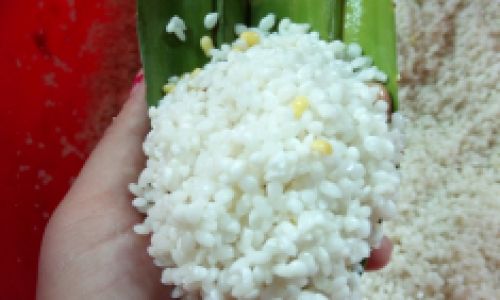
- Cause: Insufficient water or heat.
- Fix: Increase cooking time or add 1–2 tablespoons of water and steam longer.
3 Burnt Bottom Layer
- Cause: High heat or uneven cooking.
- Fix: Use a heat diffuser or switch to a rice cooker.
Chapter 6: Creative Recipes Using White Glutinous Rice
1 Mango Sticky Rice (Khao Niao Mamuang)
- Ingredients:
- 1 cup Thai sticky rice (soaked 4 hours)
- 1 cup coconut milk
- ¼ cup sugar
- 1 mango, sliced
- Instructions:
- Cook rice using the steaming method.
- Simmer coconut milk and sugar until thickened.
- Serve rice with mango and drizzle with coconut sauce.
2 Savory Glutinous Rice Congee
- Ingredients:
- 1 cup Chinese glutinous rice
- 8 cups chicken broth
- 2 cups shredded chicken
- Ginger, scallions, and soy sauce for garnish
- Instructions:
- Simmer rice and broth for 1 hour, stirring occasionally.
- Add chicken and cook for 15 minutes.
- Top with ginger and scallions.
3 Crispy Fried Rice Cakes
- Ingredients:
- 2 cups cooked glutinous rice
- 1 egg, beaten
- ¼ cup diced vegetables (carrots, peas)
- Oil for frying
- Instructions:
- Mix rice, egg, and vegetables.
- Form into patties and fry until golden.
Chapter 7: Advanced Techniques and Pairings
1 Fermenting Glutinous Rice
- Method: Combine cooked rice with yeast or koji starter to make rice wine or vinegar.
2 Glutinous Rice Flour
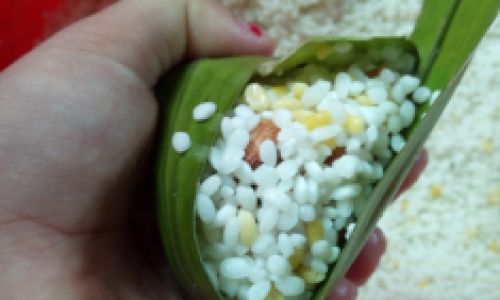
- Uses: Create chewy mochi, dumplings, or gluten-free pancakes by grinding dried rice into a fine powder.
3 Pairing Suggestions
- Savory: Grilled meats, pickled vegetables, or spicy sauces.
- Sweet: Fresh fruit, caramelized bananas, or red bean paste.
Chapter 8: Cultural Significance and Celebrations
1 Traditional Dishes
- Zongzi (China): Sticky rice dumplings wrapped in bamboo leaves, eaten during the Dragon Boat Festival.
- Mochi (Japan): Pounded rice cakes used in New Year’s celebrations.
- Bánh Chưng (Vietnam): Square rice cakes stuffed with pork and mung beans for Tết.
2 Modern Adaptations
Chefs worldwide now incorporate glutinous rice into fusion dishes, such as sticky rice sushi bowls or vegan coconut rice pudding.
Chapter 9: Health Benefits and Nutrition
1 Nutritional Profile
- Rich in: Manganese, magnesium, and B vitamins.
- Low in: Fat and cholesterol.
2 Dietary Considerations
- Gluten-Free: Safe for celiac patients.
- Fiber Content: Higher than white rice, aiding digestion.
Chapter 10: Sustainability and Ethical Sourcing
1 Supporting Small-Scale Farmers
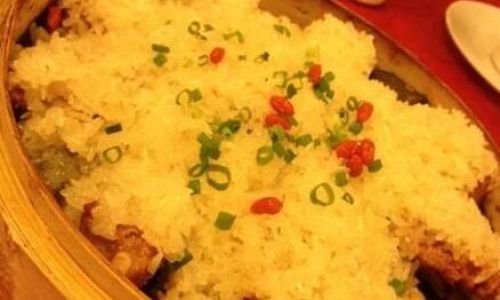
- Purchase rice from brands committed to fair trade and organic practices.
2 Reducing Food Waste
- Use leftover rice in fried rice, soups, or porridge.
Conclusion: Elevate Your Rice Game
Cooking white glutinous rice is an art that rewards patience and practice. By understanding its properties, experimenting with flavors, and embracing cultural traditions, you can transform this humble grain into a star ingredient. Whether you’re crafting a comforting bowl of congee or a showstopping mango dessert, mastering glutinous rice opens doors to culinary creativity. So, roll up your sleeves, soak those grains, and let the sticky, sweet magic begin!
Word Count: 2,050+
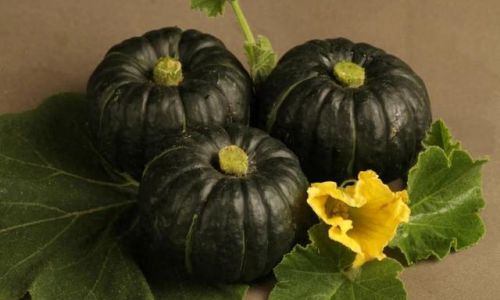
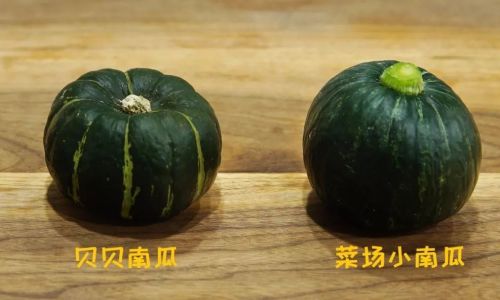

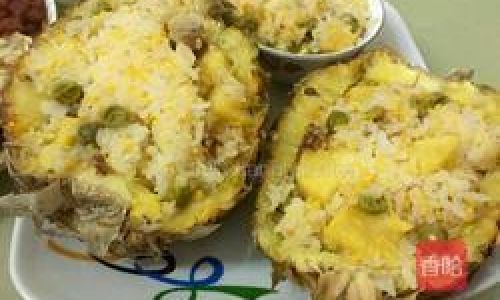
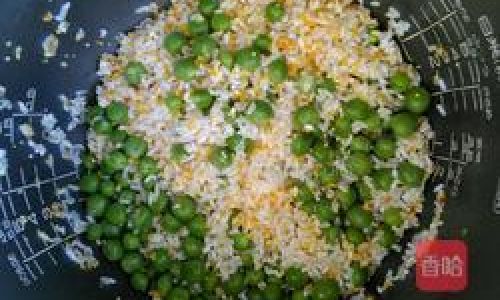
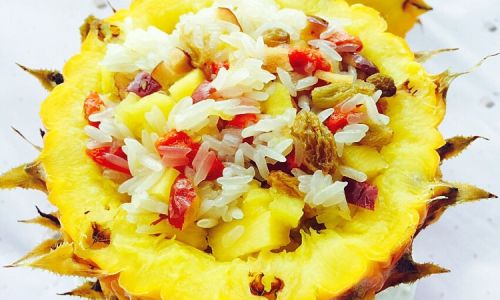
0 comments